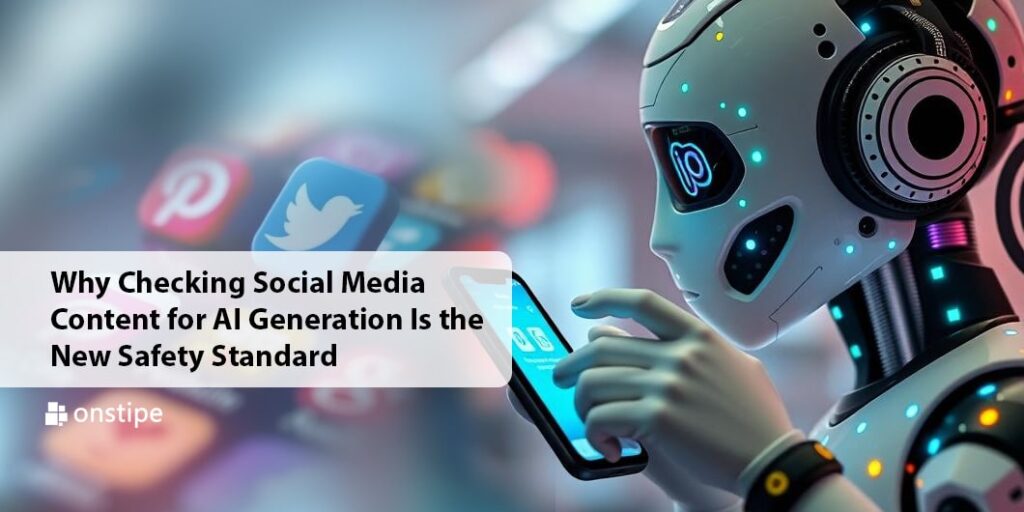Social media is no longer just a stream of status updates and memes; it’s a river of persuasive signals that shape opinions, influence buying choices, and, increasingly, rewrite reality. As generative AI models get better at writing convincing posts, comments, and even orchestrated campaigns, the act of checking content for AI generation is becoming less of a niche technical task and more of a baseline safety habit for editors, moderators, journalists, educators, and everyday users.
In a world where an appearance of authenticity can be manufactured in seconds, tools exist to give us a fighting chance. If you want to test a suspicious thread or verify an influencer’s “original” take, you can visit website to run a quick check and get a probability score that flags AI involvement. But tools are only one piece of the puzzle; understanding how and why to check matters even more.
Why Verification of AI-Origin Matters Now
The stakes are rising. AI-generated posts can be used to amplify disinformation, impersonate public figures, skirt copyright rules, automate scams, and manipulate purchase decisions. Platforms amplify whatever looks engaging; when generative models learn what performs well, they can mass-produce persuasive content that looks personal and organic. That’s why checking for AI generation on social platforms is no longer a curiosity for researchers — it’s a public-safety and reputational necessity.
Getting beyond “it feels fake”
A post that “feels fake” isn’t proof. Human intuition can flag obvious deepfakes or clumsy bot-speak, but sophisticated AI can mimic nuance, idiom, and even local slang. Detection gives you a second, objective lens — a score, a highlighted passage, or metadata that points to likely machine authorship. That information is critical when decisions (take-downs, corrections, bans) carry legal and reputational consequences.
How Detectors Work and What They Actually Tell You
Explaining how does AI content detector work in plain language: most detectors compare statistical fingerprints (token distributions, sentence-level perplexity, repetitiveness, and subtle grammatical patterns) against models trained on known human and machine text. Some tools use watermark-detection (when generators intentionally embed signals), others use classifier models trained to separate human vs. AI writing. No detector is a magic oracle; each returns a probability, not a binary truth.
The Messy Middle: Accuracy, Bias, and Trust
Not all detectors are created equal. Some commercial tools advertise high accuracy on specific model families; others flag broad stylistic signals that can misclassify non-native speakers, neurodivergent writers, or very formulaic human prose. The press has repeatedly warned that detectors can fail spectacularly, so their output should be one input among several when making a judgment.
“Is writer AI detector accurate?” A specific case
When someone asks, “Is writer AI detector accurate?” they’re usually asking about a branded tool or the general reliability of detectors. Short answer: they can be useful indicators, but are not definitive. Accuracy often depends on the models they were trained against and the adversarial tactics writers (or paraphrasing tools) use to evade detection. In high-stakes scenarios (university appeals, court evidence, corporate takedowns) human review and additional metadata (timestamps, source files, edit histories) are necessary complements.
Who’s Using Detectors, and How They Fit Into Workflows
Schools, newsrooms, brands, and moderation teams increasingly include detectors in a layered workflow. Educators may run suspicious essays through a detector and then come up with other evidence — interview the student, check drafts, or review submission metadata.
Naturally, the question, “which AI detector do teachers use?” comes up a lot: there is no universal answer, but detectors such as GPTZero, Turnitin’s AI reports, and other academic-focused tools are common starting points. Teachers report using these tools as one indication, not an absolute verdict.
The Arms Race: Detection vs. Evasion
Every detection advance invites countermeasures. Paraphrasing tools, “humanizing” services, and even simple edits can lower a detector’s confidence. That’s why platform-level verification (watermarks, provenance metadata) could be a game-changer — it moves the trust signal closer to the content’s source rather than artifactual style patterns. But technical watermarks aren’t a silver bullet: they require adoption across models and platforms, and there are privacy and interoperability questions.
In this context, the phrase “how to avoid being detected by AI detector” is a red flag: it points to misuse. Ethical users should be asking instead how to produce transparent, attributable content or how to disclose AI assistance. Trying to game detectors undermines trust and often violates platform or academic codes of conduct.
Specific Tools, Paraphrasers, and Edge Cases
Paraphrasing services (like QuillBot and others) complicate detection because they change surface signals without altering ideas. So if you’re wondering, “Can Quillbot be detected by AI detector?” the practical answer is: sometimes, depending on how the paraphraser rewrites text and which detector you use. Paraphrased content can look more human or simply shift the fingerprints that detectors rely on; modern detectors trained on paraphrase attacks may still flag it, but false negatives and false positives are common.
A Practical Safety Checklist for Social-Media Teams
Before you act
- Run a detector to get a confidence score, then treat that as a prompt to investigate, not as a final ruling.
- Check metadata: original upload times, edit history, and whether media files contain provenance tags.
- Compare writing style with known samples from the account (tone, spelling, domain knowledge).
- If the stakes are high, reach out to the account owner for clarification and request drafts or source files.
If you must respond publicly
- Prefer transparency: say that content is under review rather than publishing premature takedowns.
- Provide context to audiences: explain why AI checks are relevant to safety without revealing detection thresholds (which could teach evasion).
- Use layered remedies: demote distribution, add a warning label, and conduct a human review before permanent sanctions.
Policy, Ethics, and The Road Ahead
Checking for AI generation will become a standard part of editorial and moderation playbooks, but technology alone won’t solve the underlying trust problem. Policies must balance false positives (which can silence legitimate voices) with the harm of leaving synthetic campaigns unchecked. Public education (teaching users what watermarks and provenance mean, encouraging disclosure, and equipping journalists with verification training) will be as important as the detectors themselves.
Final Thought: Habit, not Panic
We shouldn’t panic; we should remain professional. Checking social media content for AI generation is a habit that saves reputations, prevents fraud, and preserves public discourse. It’s not an infallible line of defense, but it’s an increasingly essential one. Incorporate detectors into cross-checking routines, demand provenance where possible, and treat tool outputs as prompts for human judgment. In short: verify, don’t vilify, and make AI checks a standard part of your social media safety toolkit.







